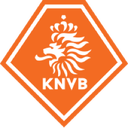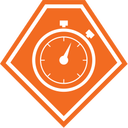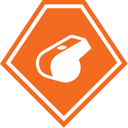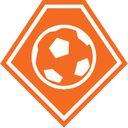6 versus 6 rules of play

Under 8s and 9s
As of the 2017/2018 season
Under 10s
As of the 2018/2019 season
Rules of play
The match supervisor is responsible for applying the rules of play. The match supervisor does not stand on the pitch, but on the sideline. Should the rules of play be incorrectly observed, the match supervisor takes a decision and, when appropriate, explains why. The sideline is a match supervisor's home base, although if the game calls for the supervisor to enter the pitch, he/she is free to do so. The match supervisor has but one obligation, and that is to ensure that the boys and/or girls play as much football as possible. Only the players and a match supervisor are allowed on the pitch.
Trainers, coaches and other parties may not be on the pitch during the game. An injury to one of the players is obviously the exception to the rule so long as the match supervisor grants permission for a third party to enter the pitch.
Number of players
6 versus 6
Age
U8s, U9s and U10s
Pitch size
42,5m x 30m
Goal size
Youth Football (5m x 2m)
Ball size
Recommended size 4,290 grams
Duration of play
U8s/U9s: 2 x 20 minuten
U10s: 2 x 25 minuten
Goalkeeper
Yes
Competition
Yes
Rankings
No
Rituals
Hand shaking
and high fives
Role of coach
Positive encouragement
along the sideline
Role of parents
Positive encouragement
along the sideline
Role of referee
Match supervisor monitors
the flow of play
Penalty
7 metres
Download
![]() Rules of play (Dutch PDF)
Rules of play (Dutch PDF)
Game Format 6 versus 6 rules of play Playing time

Playing time
The playing time for the Under 8s and Under 9s is 2 x 20 minutes. And 2 x 25 minutes for the Under 10s.
Time-out
Each half, a time-out of no longer than two minutes is observed after the U8s/U9s have played for 10 minutes and after the U10s have played for 12.5 minutes. This gives the supervisor the opportunity to briefly review the game, offer tips and focus on areas of attention, and allow the children to enjoy refreshments.
Half-time
After the first half, a 10-minute maximum period for half-time is observed.

Kick-off
The kick-off is taken from the middle line. Both teams start the game from their own half.
Goalie's ball
When the goalkeeper catches a ball that did not leave the field of play, the goalie can resume play by throwing or passing the ball or kicking out of hand.
Goal kick
The goal kick is taken when the ball is on the ground by passing or kicking it to a teammate.
Corner
Corners are taken from the corners of the pitch and dribbled into play or passed to a teammate.
Goal
After a goal, the kick-off is taken from the middle line. Both teams restart from their own half.
Out of play
If the ball crosses the sideline, it is dribbled back into play.
Free kick
A free kick may be dribbled, passed or shot at goal.
Back-pass
A ball passed back to the goalkeeper may not be picked up.
Infringement / scoring opportunity
After a violation, the opposition is awarded a free kick. If the infringement deprives the opposition of a serious scoring opportunity, a penalty is awarded.
Distance
The opponent must be at least five metres away from the ball at every restart.

Referee / match supervisor
For this game format, a match supervisor in kit of at least 12 years old is required. The match supervisor does not stand on the pitch, but on the sideline. Should the rules of play be incorrectly observed, the match supervisor takes a decision and explains them.

Competition
A competition (pool classification and fixtures schedule) is organised for this game format.
League tables
The KNVB will not announce rankings or leader boards. The KNVB will keep track of the results of each game in order to determine the strength of each team and - based on that - to reclassify a team if necessary.

Rituals
Stimulate shaking of hands before the game and a high-five afterwards as a way of saying thanks for the game. After the game, both teams can
take penalties from a seven-metre distance. Youthful footballers always regard the taking of a penalty as a wonderful way to end the game. This is not only the case for the winning team, but also for the players on the losing side.

Ball size
The KNVB recommends a size-four ball of 290 grams. A size-five ball of 290 grams is also permitted.